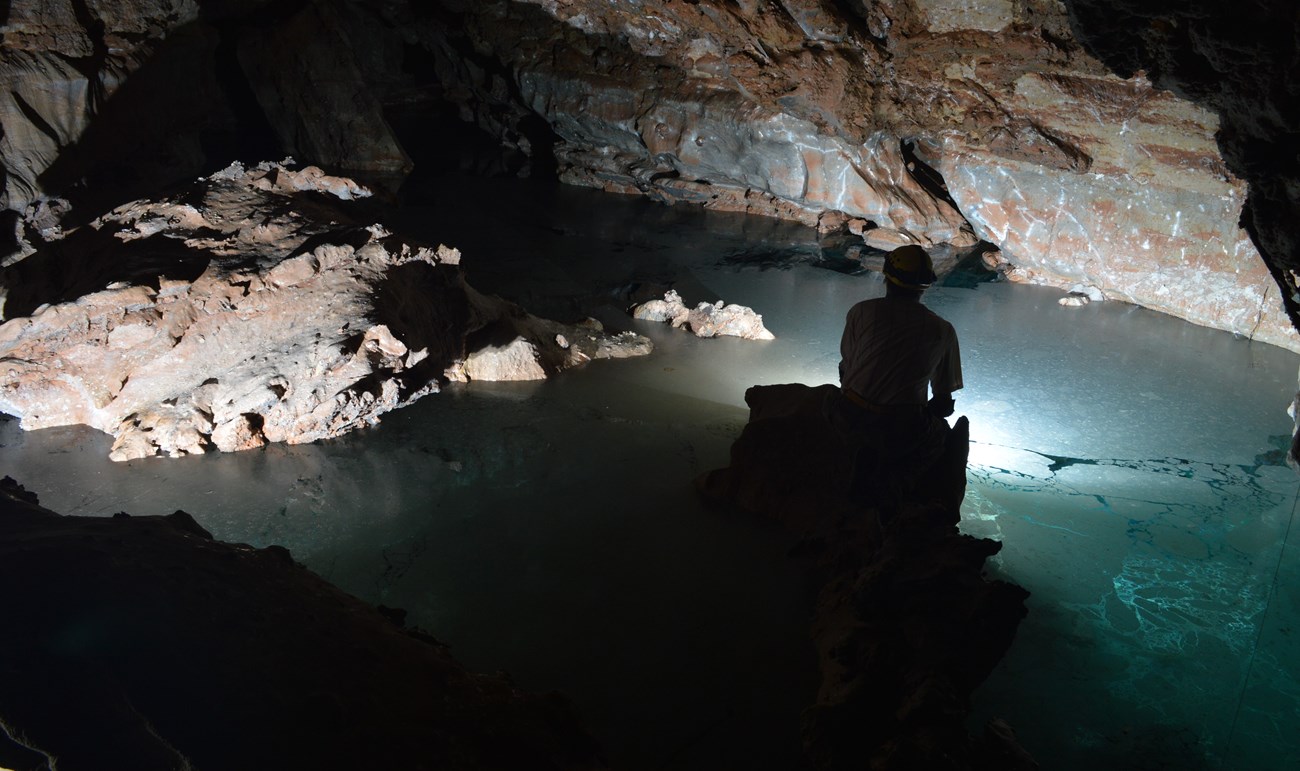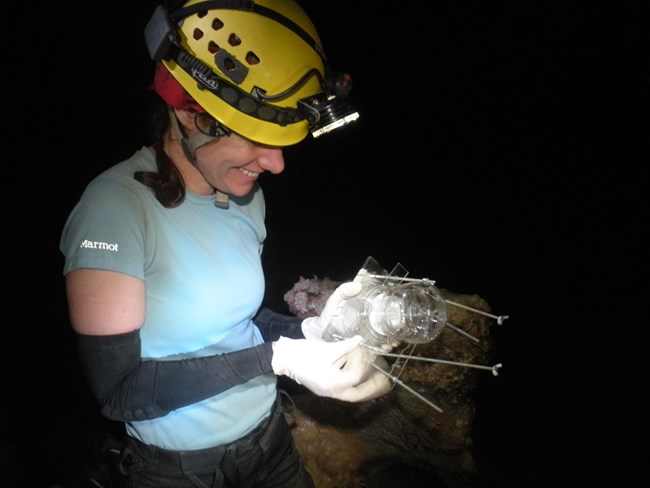Last updated: July 30, 2024
Article
Extremophiles of the Madison Aquifer

NPS Photo / Austin

NPS Photo
Sampling the Water
Microbiologist Dr. Hazel Barton studied these microorganisms between 2008 and 2011. She and her team took samples from four places within or near Wind Cave National Park: Beaver Creek Spring, Streeter Well, Park Well 2, and Wind Cave Lakes. The first sample came from Beaver Creek Spring, outside the park. Due to its use as a watering hole for livestock, analysis revealed the presence of bacteria from cattle feces, and the spring was discarded as a sampling site.
Dr. Barton and her team collected samples from Streeter Well, Park Well 2, and Wind Cave Lakes in late July of 2010. Damage to the Park Well 2 sample prevented DNA collection, but samples from the other wells and lakes were used to record cell numbers and other information.
Journey to Wind Cave Lakes
While data collection from the spring and wells is done from the surface, a major challenge of sampling the lakes is reaching them. Experienced cavers spend about two hours one way to reach them, a physically demanding trip requiring cavers to squeeze, crawl, climb, and chimney their way through narrow cave passages. Specially designed sampling equipment must be small enough to fit through these narrow passages, and it is carried over 500 feet below ground by researchers as they move cautiously in order to protect fragile cave formations.

NPS Photo
Life in Extremely Clean Water
Low cell numbers from the July 2010 sample showed that water in the cave’s lakes is extremely pure, with very little biologic material present in the samples. This meant a larger sample size would be needed to in order to collect enough cells for DNA analysis. The team filtered 200 liters of water from the lakes and Streeter Well during a December 2010 sampling trip.
In order to obtain as much information as possible about the microorganisms in the water, researchers cloned the samples from both the Streeter Well and the lakes. Cloning allowed multiple analytic techniques to be used on the same sets of DNA. Analyses of the July 2010 samples presented 88 different bacteria. However, species present in this population suggest this sample became contaminated when the pump collecting the sample broke. The December 2010 samples allowed researchers to identify about 350 different bacteria species, many of which had not been discovered yet. The data indicated the lakes are unlike other bodies of water for multiple reasons. There are no protists or other eukaryotes present and Gammaproteobacteria, known for breaking down organic material, is the dominant class in the water. This is an interesting discovery because the lakes have very little organic carbon. Alpha- and Betaproteobacteria are present, but their numbers are lower than what is typically found in cave ecosystems.

NPS Photo
After further tests, researchers found the bacterial communities of Streeter Well and the lakes are different even though both are connected to the Madison Aquifer. This may be caused by the concrete casing of Streeter Well, because concrete can promote the growth of certain microorganisms. This means the only way to obtain a true representative sample of life in the Madison Aquifer is to go to the Wind Cave Lakes
Other Connections
The Wind Cave Lakes have proved to be an invaluable resource for monitoring the Madison Aquifer. Results from this research can help scientists learn about other extreme environments. NASA scientists can use this information to develop models of low energy environments, which can help them look for life on other planets. Bacteria found within the lakes can lead to advancements in the medical field as well. As more samples are collected from the lakes, scientists learn more about the life, diversity, and history of microorganisms within the water.
Sources
Barton, Hazel A. Accessible Microbial Flora of the Madison Aquifer: Investigation in Calcite Lake, Wind Cave, Wind Cave National Park, 2012.
Hershey, Olivia S. et al. High Microbial Diversity Despite Extremely Low Biomass in a Deep Karst Aquifer, 2018.
Ray, Charles Michael. Dakota Midday: Black Hills Cave Lake Microbes May Help Fight Superbugs, https://listen.sdpb.org/post/dakota-midday-black-hills-cave-lake-microbes-may-help-fight-superbugs, 2015.
